Who is Grace Bailey?
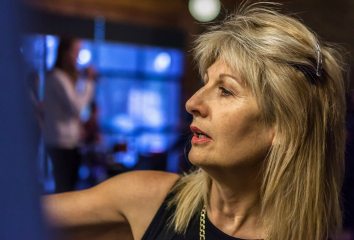
I’ve almost always been more or less an artist. Along the way I’ve been affected by lots of the nonsense surrounding the term which creates this atmosphere of what is commonly referred to as the ‘emperor’s new clothes’. The use of the word ‘artist’ is debated and afforded some kind of mystery. What is an artist and do you measure up? There’s even a debate about exactly how you define the word ‘art’. With so much lack of clarity, it’s easy to be confused and wander around trying this and that, without any real direction. It’s taken me a lot of time to recondition my thinking to disengage from much of that and the following is the journey that I took. I’ve outlined it here because I’ve noticed that many creatives exhibit similar insecurities and it’s taken me a long time to gain any understanding of it all. My hope is that perhaps my story may help some people understand themselves earlier than I did!
I’ve always been a bit different to most people and I never really understood why, until fairly recently. I could always draw but took it largely for granted because I couldn’t see how to make a living from it. I didn’t value it and I certainly didn’t see it as a calling or even as particularly worthwhile. I didn’t recognize the importance that God places on the arts and on creativity. I didn’t understand that God was and is the original artist and is the source of such mind-blowing creativity that it’s difficult to fathom the depth and breadth of it. Nor did I recognize the honor of being a God-creative, of creating images from the Father’s heart, of translating messages from the supernatural to the natural, of creating images that can change peoples’ lives.
I didn’t understand my creativity or where it had come from, much less its purpose. Neither did I understand the seemingly excessive dose of sensitivity that I seemed to have that most normal people didn’t seem to have. That includes the mammoth doses of depression, passion and the constant need for change. There was so much that I didn’t understand, but along the way, there was this art thing that wouldn’t really go away. I’d identified it as the thing that I was best at, although in retrospect, this may have been limited by a narrow understanding and inadequate experience. But that was the path that I pursued in a reasonably random, ad hoc, roundabout manner.
No Artist in the Family
The first inkling I ever had that I could draw or had any artistic bent was when I was about eight or nine, copying a picture of a camel into a scrapbook for a project on pets. I was sitting in front of the heater in our smoky lounge room with the TV blaring away and my camel and cats were remarkably recognizable. I remember my mother saying at the time, “I don’t know where she gets it from,” as there was no-one in the family with any artistic ability that we knew of. To me though, it wasn’t anything special. I could just do it.
Over the years, I’ve wondered who else in my wider family before me had artistic leanings that were never fully explored. Art tended to be a pastime of the educated and financially comfortable, not those who scratched a living, as most of my forebears had done. Years later I learned that Australia’s first European artists were forgers who had been transported as convicts to the penal colony. Imagine my amazement when I realised that my forebear, Ann Bailey, had been transported for forging! This was the apparent source of the ‘talent’ and evidently it had jumped five generations or, more likely, the artistically gifted in the intervening generations had no opportunity to develop their skills or market their wares, either not progressing or remaining unknown, as many artists, particularly women, of the first two centuries of Australia’s settlement did.
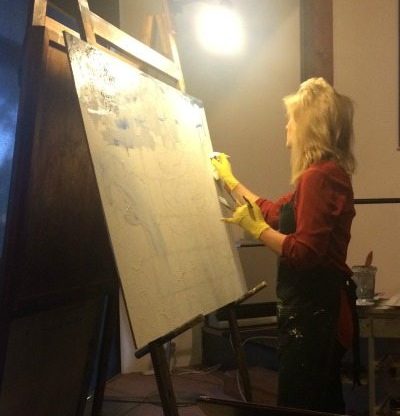


To my knowledge, no one in my family before me had had any artistic acumen and neither did they have any schooling beyond primary level. Both my parents had had to leave school when they were 12 or 13 because of prevailing economic and social conditions in rural Australia at the time, so neither had much appreciation of art, which translates into nil artistic encouragement. They couldn’t applaud what they didn’t recognize or have some understanding of. I can comfortably say that there was no art or music in our home as I was growing up other than that provided by the radio and regional TV. As I got older I wondered greatly about where this apparent ‘gift’ had come from as it was definitely not something apparent in either parent.
And what was this ‘gift’ anyway? I could draw, or more correctly, I could copy most things with accuracy. Even though I was aware that I had some kind of artistic ability, I took it for granted for many years, not realizing its importance. I didn’t know any artists who actually made a living and I had little grounding in what artistic ability actually meant. I did art at school, which left me completely disinterested in any form of art history. In fact, it so completely anaesthetized me against any interest in historical art that I didn’t pick up an art book for two decades!
Instead, I pursued a variety of things, all designed to earn a living, but as is common with many artist’s experiences, none were lasting or fulfilling. At the same time, I married and had four children in a little less than five years who occupied me fully for several years. The marriage was never good and I spent many evenings alone in front of the television painting little pen and ink ‘pretty pictures’, mostly as house décor, but occasionally I’d enter competitions and win. All of those hours were valuable as skills were being developed and honed and little by little, I was unknowingly doing my ‘10,000-hour’ apprenticeship!
The Value of Talent
One of the questions that really troubled me for a long time was whether or not I was actually talented. I didn’t stop to define what ‘talented’ meant but I wanted to understand whether I really was ‘good’, or whether I was just a copyist. Some kind of insecurity about ability affects many artists and this was the underlying insecurity for me. If you doubt your ability, you’re unlikely to really test it or develop it fully. Eventually, I came to the conclusion that raw talent doesn’t actually matter. I looked around at other artists with work in exhibitions and galleries and realized that it is more a marketing issue than a talent one. Sure, a ‘talented’ artist can probably achieve more than a less talented one IF they put the work in to develop their abilities and skills. The raw talent probably gives an artist a head start, but dedication, diligence and practice will overtake the bright star, unless they develop persistence through diligence.
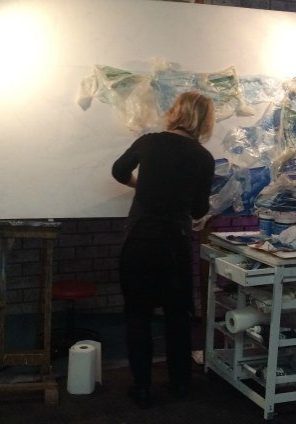
To use a correlation with music, I’ve heard recorded artists on air who, to me, sound dreadful, and yet they have been successful enough to be recorded and played on mainstream radio. I would have thought that their lack of talent was obvious, but evidently there must be a market for their style and they’ve persisted enough to achieve some success. Being artistically gifted or not is possibly a matter of opinion anyway. It’s more important to disregard the concept and put in the hard yards to develop skills. There are loads of very talented artists and musicians who don’t make it because they don’t work at it consistently or don’t stick to it.
Strengths
I believe artistic talent can take a number of forms, just as musical talent can take different avenues. Some artists can draw easily without lessons, some have an ability with color, so they just ‘know’ which color goes with which, and others have spatial and compositional understandings beyond the rest of us. The tragedy is when people believe that they are not artistically gifted because they can’t draw or perform some kind of artistic activity that others can. In the same way that most musicians have to learn to play their instrument with years of practice, most artists have to learn to draw or compose or use color.
Certainly, some people are gifted with accurate drawing, just as some people are gifted with beautiful singing voices, but just as most people can learn to sing in church okay, most people can learn to draw or compose or use color okay. It’s a matter of effort and diligence in learning, not just giftedness.
My Strongest Area
My strongest ability has always been linework, or drawing, which was also my favorite pursuit, probably because it’s the area that I have the most facility with, and therefore found the easiest. For many years it was my first love and I always deemed myself a drawer, not a painter. I think in retrospect that was more an excuse until I learned to paint, however, I really believe that good drawing has the potential to create a much better painting than one that doesn’t have it. Even abstract art often requires some level of drawing.
Color is my least fluent artistic language and composition is somewhere in between. It’s easy to identify a good drawer, but perhaps less easy to identify the colorists who (and this is broadly generalizing) often are good with shape and make great painters, while their drawing might be ho-hum. I’ve noticed when I’ve taught drawing that these drawers usually see things as shapes rather than with outlines, which changes your perspective entirely.
Colorists just seem to know what color to put where, without having to logic it out. I have to stop and analyze and I still don’t get it right all the time. In fact I used to ask one of my sons from about the age of 6 which color to use, because I recognized that he just ‘knew’! He would stand in front of a work and be able to tell me what color to use, even as a child. I still make what I recognize now as color mistakes; usually of tonal value. These days I’ll get the color right but not always the correct shade.
On the other hand, I can usually ‘see’ where a drawing has gone wrong without too much work. To put it another way, it’s apparent where the errors are without too much analysis. That does not include more technical drawings such as machinery or perspective because they usually require a degree of technical logic – or even math!
Within different types of drawers there are a variety of leanings. In my teaching observation, I’ve noticed that most drawers are either lineal or tonal. That is they either like to draw with line and can often achieve a reasonable likeness of the object or person, (lineal), but don’t naturally know where to put the tone. Tonal drawers on the other hand, draw with blocks of tone and often aren’t so precise with placement of features, using multiple lines, waiting for the eye of the beholder to show the correct position.
It’s not an exact science and I only raise these points as I’ve found over the years that many people have misconceptions about art and their ability and often being able to clarify what kind of drawer they are removes that initial need or tendency to compare themselves unfavorably with the bright young thing in the corner who can turn out amazing drawings!
To sum up: I’m a lineal drawer who doubted her ability, which negated its potential, who lived in a regional area with no networks or encouragement, who pursued what academia seemed to say was the right path (that of galleries and exhibitions) and who eventually realized that that path wasn’t for me.
Start Your Own Prophetic Art Adventure With The 'Painting With God" book.
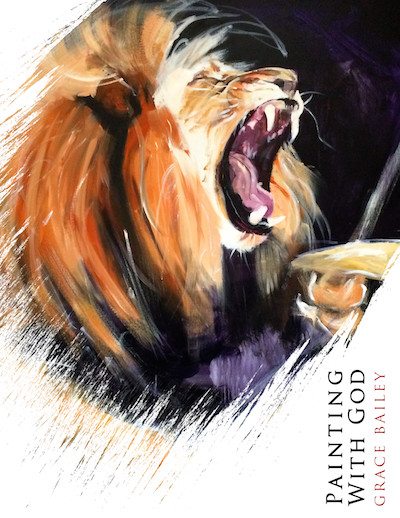
You'll be guided by experienced artist, Grace Bailey, through ten colorful chapters on how to get started, face your fears and create images that tell God-stories.

Is talent as an artist important?
As I explained earlier, I doubted my artistic abilities for many years. I had very real doubts that I actually had any real talent and it undermined so much of what I did or aspired to do. It also brought a lot of insecurity. I’d learned early on that I could draw, but what was I to do with it? I didn’t see art as a viable career option; it was just something that I happened to be good at so it remained a hobby for many years. I certainly didn’t see it as a means to a living or as having a God-purpose. In fact, I didn’t even consider a career as an artist for over a decade after I left school.
Eventually, I realised that diligence, dedication and determination are far more important. Tremendous talent in the hands of someone who doesn't develop it or use it diligently remains stillborn. Alternatively, the little worker bee with average talent who continues to apply themselves is more likely to achieve. The bottom line is, it just doesn't matter. What does matter is what you do with what talent you do have.
This involves the need for a lot of study but in methods that advance your skills, not just teach you to pontificate about other artists. As I said before, I’d done lots of courses including seven years of tertiary study, but very little of that had taught skills. Much of the learning in tertiary institutions in Australia at least revolves around what I call ‘experiential’ learning. In other words, self-exploration of the methods and materials with very little grounding in academic learning or demonstration. In such classes, students are given the task and the materials and virtually told to ‘play’ and see what eventuates. I’ve been in lots of classes where life drawing consisted of contour drawing, mark-making using various implements and a variety of other ‘experiential’ learning methods rather than demonstration and instruction about anatomy or tone or much else!
The results are that graduates don’t actually learn how light falls across the body or how to apply tone successfully or how to recognize when their drawing is wrong. Even now, with so many years’ experience, I still struggle with light placement and depth. Learning by doing is fine if you are improving but I’ve seen students who have made the same mistakes for years.
Setbacks
I studied ceramics at university shortly after I left school as I saw it as a way to make that living. Pottery was very popular and seemed to sell well. I was young and hopeful and poured my heart into it, completing the qualification with the intention of setting up a commercial pottery. This is where one of those life-changing moments happened.
I’d met my children’s father 10 days after I turned 16. We moved in together while I was still at school, even though I regarded myself as a Christian and still prayed every day. We had a very volatile relationship where both physical and psychological abuse was a part of everyday life. Much of that was my fault as I had a very caustic tongue so it’s not surprising then that my children’s father dished out some verbal and other ‘clangers’ in retaliation. One of those moments was at the end of the ceramics course when he was very blunt about the poor standard of my work.
The result was that I didn’t go near a pottery wheel again for decades. In retrospect, what he said turned out for good, as a commercial pottery requires the artist to produce the same thing over and over again, in exactly the same way, day in and day out. That’s NOT something I could have done well, even if my works were okay (and they weren’t). I would have been so bored! My personality means that I’m much better at one-off sculptural pieces than repetitive domestic work.
I bring this up because the impact of those words wounded the self-estimation of my artistic ability so deeply that I completely slammed the door on ceramics – even though I had a university qualification in it. I allowed someone else’s opinion of my ability to so color my paradigm that I completely disregarded all that work and effort that I’d put in.
Older and wiser allows you the benefit of being able to see how incredibly foolish that was. Artists by nature can be very sensitive and this was my Achille’s heel. Jeff Crabtree in the book co-authored with his wife Julie Living with a Creative Mind refers to this as ‘skinlessness’. (15) The very attribute that allows us to feel and see perhaps more than lesser creatives opens us up to emotional jeopardy. The sword had been applied and it accomplished its goal of sending me way off course!
I wandered around after that doing bits and pieces of art courses as a hobby. It was, however, those little short courses that taught me whatever skills I have not taught myself. I dabbled in watercolor, acrylics, oils, pastels, mixed media and did a great many hours of life drawing, all of which made a contribution to the ‘10,000 hours’. I’ll talk later about the wisdom of concentration and refining of skills in an area rather than spreading across multiple media, but at that stage, it seemed like the right thing to do.
And then I became completely absorbed with children. I had four children in less than five years whom I homeschooled for a while. Along the way, I started a Christian school, which took a lot of energy. Between the two, there was very little left for art except that it seemed to keep raising its head and wanting to be noticed! Bear in mind, I believed at that time that it was nothing special, that everyone more or less could do it, and besides, it didn’t make any money. So why bother anyway?
I became a single parent when my youngest was six and remained so for 14 years. During that time I was fortunate enough to be able to gain qualifications. I did a research Masters which meant that I created a body of portrait paintings over eighteen months. This was the first time that I really focused on my art. I used to go to uni every day and paint! When I first started, it took me nine months to complete a large 240cm x 120cm (8’ x 4’) portrait. By the end, I painted the last of 17 portraits in one day, from a blank canvas, all 180cm x 120cm (5’ x 4’) in oils on canvas.
It was an amazing time because I learned so much about myself. I can’t say that my work was outstanding but afterwards I felt that I finally ‘grew’ up during that time. I don’t remember much Kant or Plato and art appreciation courses are not my thing, but that time was so rewarding because I explored me and my ability for the first time.
The portraits were of people who had overcome some kind of difficulty in their earlier lives to become who they now were. I’ve heard it said that all portraits are, at some level, self-portraits and imagine my surprise when I realized that I had in fact created a body of work which had unwittingly reflected my circumstances!
Waywardness
After I left university and had an interstate relocation, I moved on from the singular focus on portraiture and played around (unsuccessfully) with what I thought might be more saleable work. Along the way, I became very disenchanted with what I saw in the art world in Australia. In the first of several conscious decisions to kick against the goads and deliberately choose to walk a different path, I made a decision to only create works that were in some way beautiful. Bear in mind that I’d had years of inculcation in contemporary arts practice where beauty was seen as an anathema, as previously discussed.
That disenchantment grew into the black time previously mentioned when I packed up my studio and stopped painting altogether. It was indeed a dark time but eventually when God told me to start painting again, it was different basically because I’d arrived at some understanding of where I fitted. I’d made some conscious decisions to go against some of the prevailing concepts that the arts community all seemed to accept, mainly because they no longer made sense to me. In effect, I‘d turned my back on many of the precepts of the established art world and secular art.
And then along came prophetic art.
The Advent of the Prophetic
Suddenly, there seemed to be a field of art where I fitted, where my works were recognized and lauded. I could really sense God’s leading to paint and that underpinning made it worthwhile. There was purpose to painting other than just amusement. He’d given me this talent and over the years arranged its development, seemingly all with the purpose of creating prophetic art.
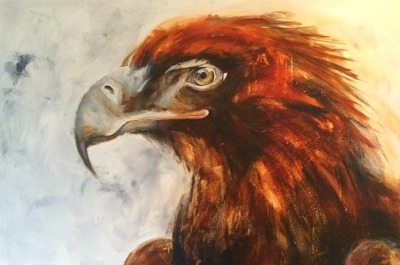
The prophetic has always occupied a special place in my life but for years after the divorce, I had more or less laid it down. To begin once again to embrace and pursue it through painting was something new altogether. There has been a sense of learning ‘precept upon precept’ or unraveling the mystery along the way. It’s as multi-layered and multi-faceted as any other thing in the Kingdom and is therefore probably impossible to completely understand. My emphasis is on painting and the prophetic part is an ongoing study. There are lots of theologians who can give you chapter and verse about the wherefores of it all but I don’t have the background, education or interest to do that. I’m called to paint prophetic images and to work at improving them along the way.
When I started the year of painting, concepts and ideas began to be revealed about prophetic painting and about the standard of Christian art worldwide. Things that I was subconsciously aware of crystallized and other ideas that I had never realized were revealed in the process of writing. Not long after I started the journey to understanding, I became aware of an impediment that had unconsciously kept me back for many years.
Dealing with Dross
When I was young, I went through a period of intense exploration and experimentation. I had grown up in the church but because it didn’t seem to be able to answer my questions about life, I went looking for my own answers in a lifestyle that ultimately caused me a lot of pain. I was pretty full-on both in personality and in action which in retrospect I can see would have been hard to live with! I rode the largest motorcycle in school. I lived with my children’s father throughout my final year at school. The only scandalous thing to come close to that at the time was the girl who had a baby and had to leave school. Later, I rode a customized Harley in the years before middle-class executives did. Whether due to youthful ignorance or just plain naive stupidity, I used to ride with some very rough characters. At the time, I prided myself on not being afraid. I don’t point these exploits out to promote them but to describe the kind of person I was.
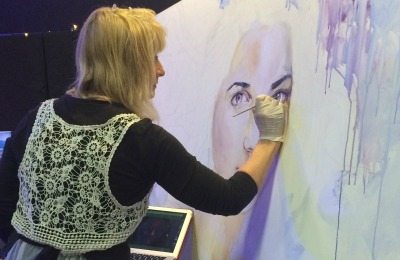
Fast forward through divorce and life. My eldest son was getting married in Thailand and my daughter and I went over for a couple of months beforehand. The week before the wedding I rode a motorbike out to a village hill-tribe with a group of guys. To set the picture for this, imagine the worst road you’ve ever traveled on. The ruts were literally 30cm, or a foot deep, and then some! The mud was unbelievable! The foliage on the side of the road was so thick that I remember thinking that if someone threw a body in there, no-one would find it for a long time. As well, either side of the road was sheer up and down in places. Along comes me, who hadn’t ridden a motorbike for a couple of decades and then never off-road. Off-road bikes are not made for short people. I could reach the ground on one side if I lent the bike over at a real slant. So off we go, on a mud path, very heavily rutted where I couldn’t reach the ground. The men I was with just put their feet down and floored the accelerator, which kept them upright. I very gingerly picked my way between holes and ruts and eventually made it to the top with a lot of patient help. I went very cautiously as I reasoned that it was the week before the wedding and I didn’t want a broken bone.
After I got home from Thailand, I came to the realization that that had been an excuse. I couldn’t work out why I’d been so timid. I believed that timidity was not part of my personality and yet I’d been a complete wimp on that bike. I realized that I’d been intimidated and that was the beginning of a personal realization that eventually brought real freedom.
Freedom in Worship
I’ve always loved to worship. Trouble was that I couldn’t hold a tune and couple that with an ability to put out a great deal of volume. The kind of off-key volume that causes young girls to laugh and older people to plead “don’t sing Grace”. I eventually got the message and quietened down. It represented, however, more than just polite reverence for other people. It brought about an ongoing, gradual deepening or closing down of an inner part of me that I didn’t realize. It caused me a lot of pain over the years but I looked at it as my Achille’s heel, the one thing that was my weakness, that thing that caused me embarrassment when virtually nothing else did. It was the thing that I couldn’t talk about to anyone, much less express publicly. I purposefully closed down singing and only sang at a level that others couldn’t hear.
Unbeknownst to me, this allowed a gradual intimidation thing to come around me. Here was this larger-than-life, in-your-face, not-scared-of-anyone person scared to sing out loud! It sounds so foolish now but at the time it was written in concrete in my life. Every time I went to church, I purposefully restricted that inner part of me that wanted to express worship and it went on for over a decade!
In 2014, I joined Sounds of The Nations, an entity which seeks to encourage local ethnicities to worship in their own cultural music style as opposed to adopting western worship. As part of that process, we were able to accompany Roma Waterman, who with her husband Ted are the Oceanic directors to wild and amazing worship opportunities and conferences where we were encouraged to minister and prophesy. For the first time in years, I had the freedom to minister and release the power of God. The freedom was so enervating! I had a taste of what I’d left behind many years before, about the time of the divorce, when I had regularly ministered. As well, Roma worships prophetically in tongues a lot and really belts it out. Almost everyone in our team are worship leaders so there were plenty of people around who I could ‘follow’ to keep vaguely in tune. And besides, no-one could hear me over them anyway!
At one of the retreats that we had with Sounds, we did a workshop with a lady called Dee Kaylock, who talked about her experience of retreating into a figurative cave following the death of her parents and a business catastrophe. At the time I thought it was a cool story without it touching me emotionally, but that night, God made it clear that I’d done the same thing. I’d retreated into a prison with worship and it had affected many other areas of my life subconsciously, bringing timidity. A mighty roar rose up from within me and I faced that spirit of intimidation head-on. It brought the most amazing breakthrough. I stopped caring what people thought about my singing or my worship. I began to pursue worship with my whole heart, with unabashed abandon. To extravagantly, clamorously worship like David did.
That roar seems to come up a lot now during worship. It’s usually subconscious and it just seems to come unannounced. I believe that there is power in it. Dan McCollam had a word for me that God had given me a voice and I was to use it. Well, that was a pure license to go forward with a roar!
The ironic thing is that I seem to be led to paint a lot of roaring lions. You may remember that before I started prophetic painting, I’d said to God that I didn’t want to paint lions and eagles and yet now I paint more of them than anything else. These roaring lions may represent self-portraits with the roar of the Lion of Judah emerging through worship. When I was young, I went through several years of wanting to be quiet and meek like the pastor’s wife, because that’s what I thought women were meant to be! Now I realize that God created me to have a voice to break through intimidation in worship and lead others into freedom in praise.
This book is a step in the ongoing result and it is my sincere hope that my story will bring clarification, understanding and reassurance so that some people can avoid the lifetime of wandering in the wilderness that I experienced. Christian art has begun a journey of re-invention and must begin to encompass discussion and exploration. One thing is for sure, it’s not about pretty pictures or cutesy images but about glorifying the original artist and leading a revival in creativity in the lives of those who believe they are creative and those who believe they are not.
Start Your Own Prophetic Art Adventure With The 'Painting With God" book.

You'll be guided by experienced artist, Grace Bailey, through ten colorful chapters on how to get started, face your fears and create images that tell God-stories.


